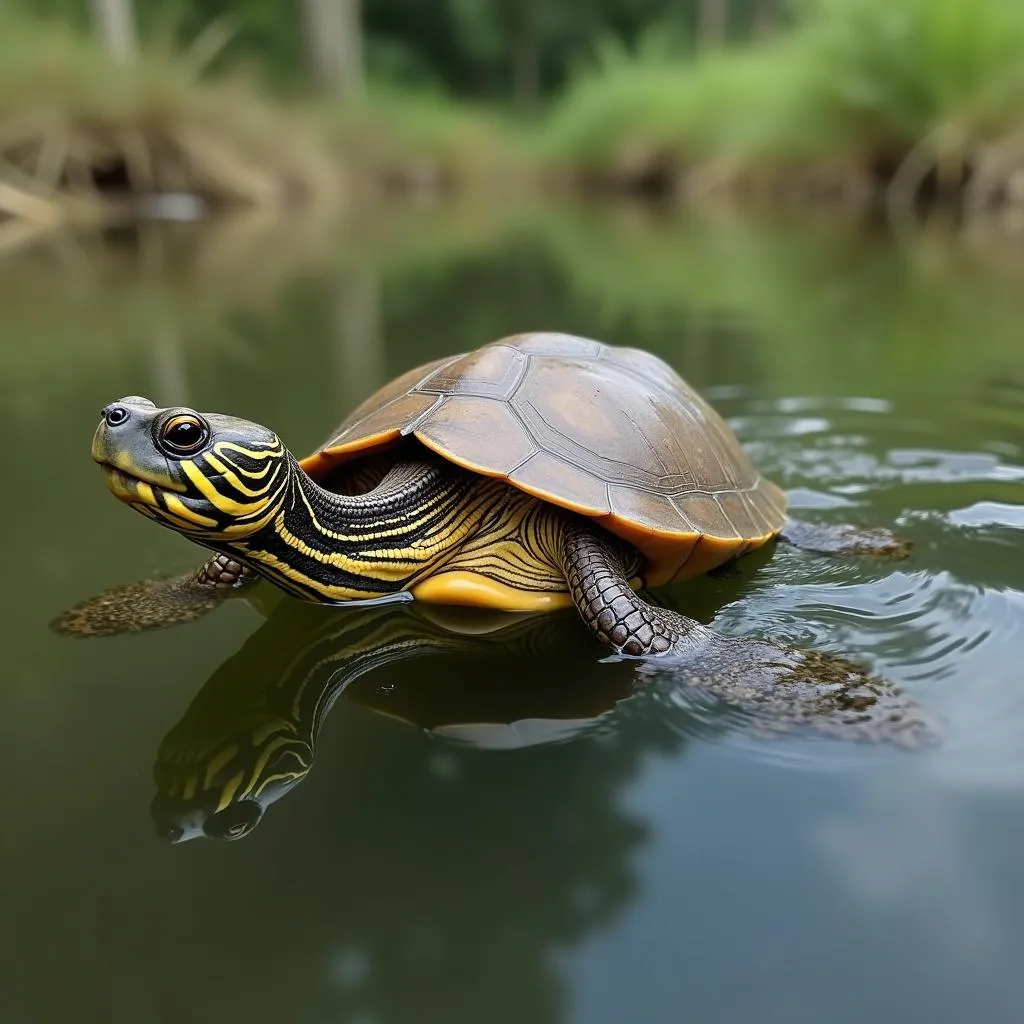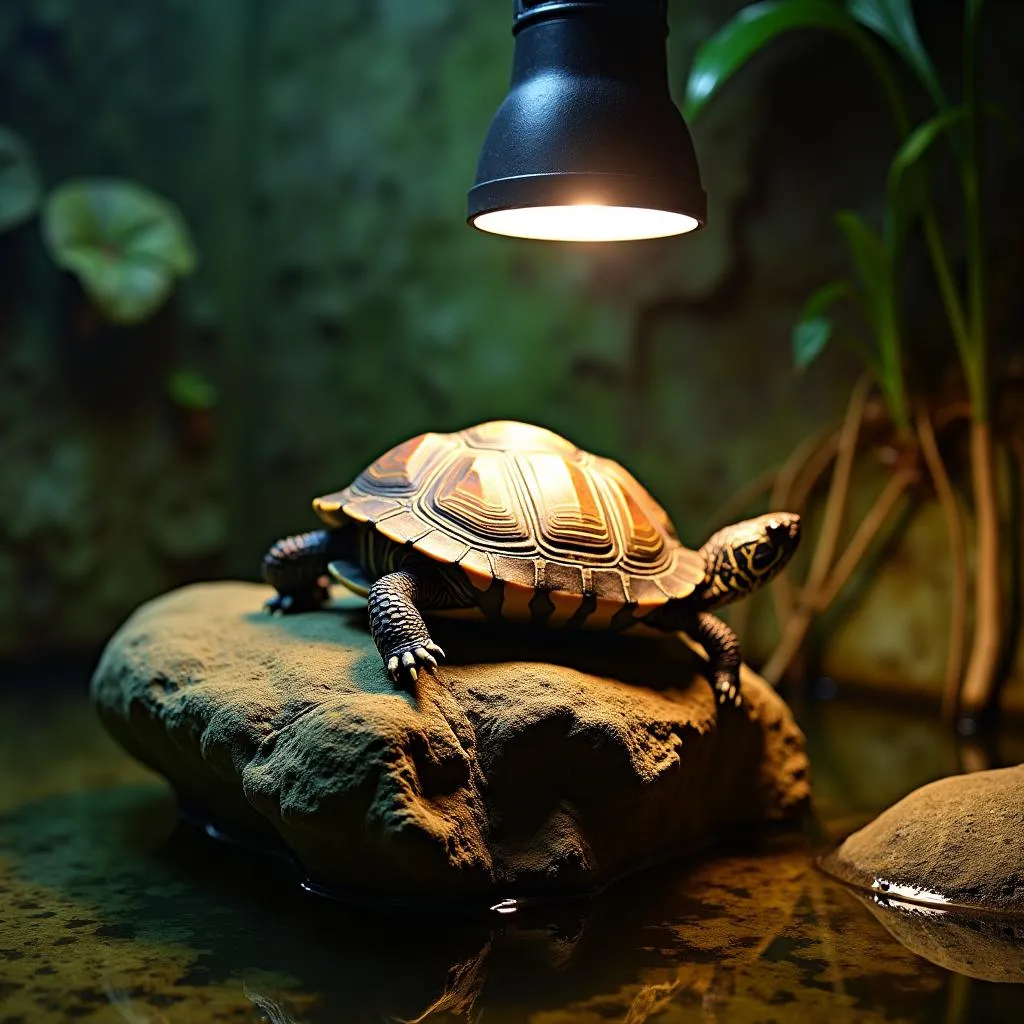African Aquatic Sideneck Turtle for Sale: A Comprehensive Guide
The African aquatic sideneck turtle, also known as the African helmeted turtle, is a fascinating creature gaining popularity in the pet trade. Before bringing one of these unique reptiles home, it’s essential to understand their specific needs and requirements. This comprehensive guide will delve into everything you need to know about caring for an African aquatic sideneck turtle, from choosing the right tank to providing a balanced diet.
Understanding the African Aquatic Sideneck Turtle
African aquatic sideneck turtles (Pelomedusa subrufa) are native to sub-Saharan Africa, inhabiting a variety of freshwater habitats, including rivers, lakes, and swamps. They are known for their unique ability to retract their heads sideways into their shells, a characteristic that sets them apart from other turtle species.
 African aquatic sideneck turtle swimming in clear water
African aquatic sideneck turtle swimming in clear water
These turtles are relatively small, typically reaching 6-8 inches in shell length. Their flattened carapace and webbed feet make them adept swimmers, while their olive-brown coloration provides excellent camouflage in their natural environment.
Setting up the Perfect Home for Your Turtle
Providing a suitable habitat is crucial for the well-being of your African aquatic sideneck turtle. A spacious tank is essential, with a capacity of at least 50 gallons recommended for a single adult. The tank should be filled with dechlorinated water, maintained at a temperature of 75-80°F.
 African aquatic sideneck turtle basking under a heat lamp on a rock
African aquatic sideneck turtle basking under a heat lamp on a rock
A basking area is crucial, allowing your turtle to dry off and regulate its body temperature. This can be achieved using a platform or rock that extends above the waterline. A UVB lamp should be positioned over the basking area to facilitate vitamin D3 synthesis, essential for calcium absorption and overall shell health.
Dietary Needs of the African Aquatic Sideneck Turtle
African aquatic sideneck turtles are omnivores, consuming a varied diet in the wild. In captivity, their diet should consist of a balance of commercial turtle pellets, live prey, and vegetables.
High-quality turtle pellets should form the foundation of their diet, providing essential nutrients. Supplement this with live foods such as insects, worms, and small fish to stimulate their natural foraging instincts. Leafy greens, aquatic plants, and chopped vegetables can be offered as well.
 Close-up of an African aquatic sideneck turtle consuming an insect
Close-up of an African aquatic sideneck turtle consuming an insect
Choosing a Healthy African Aquatic Sideneck Turtle
When purchasing an African aquatic sideneck turtle, it’s vital to select a healthy individual from a reputable breeder or seller. A healthy turtle should have clear eyes, smooth skin, and a firm shell. Avoid turtles with any signs of lethargy, discharge from the eyes or nose, or shell deformities.
Conclusion: Providing a Rewarding Experience
Caring for an African aquatic sideneck turtle can be an enriching experience. By understanding their specific needs and providing a stimulating and well-maintained environment, you can ensure your turtle thrives in your care. Remember to consult with a veterinarian experienced with reptiles for any health concerns and enjoy the companionship of these captivating creatures.


